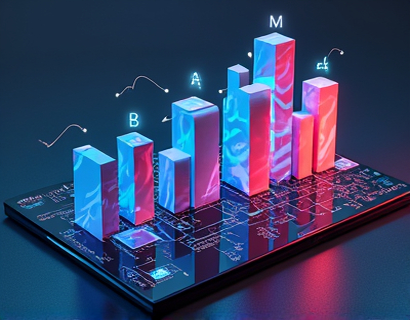Seamless Cross-Chain UCASH Swapping: Revolutionizing Blockchain Asset Exchange with Advanced Online Platform Technology
The landscape of digital asset management is undergoing a transformative shift with the advent of advanced online platforms that facilitate seamless and secure cross-chain swapping of blockchain assets. This revolution is particularly significant for UCASH, a versatile digital currency that is gaining traction across various blockchain networks. The ability to swap UCASH seamlessly across multiple blockchains not only enhances liquidity but also broadens accessibility for traders and enthusiasts. This article delves into the intricacies of this technology, exploring how it is reshaping the future of blockchain asset exchange.
Understanding Cross-Chain Swapping
Cross-chain swapping refers to the process of exchanging digital assets between different blockchain networks. This capability is crucial in a decentralized ecosystem where assets are fragmented across various chains, each with its own protocols and standards. The challenge lies in creating a unified interface that can bridge these disparate systems, allowing for smooth and efficient asset transfer. For UCASH, which operates on multiple blockchains, this means users can manage their holdings more effectively and capitalize on opportunities across different markets.
Enhancing Liquidity and Accessibility
The introduction of advanced online platforms for cross-chain swapping significantly enhances liquidity in the cryptocurrency market. By enabling users to swap UCASH across various blockchains, these platforms increase the availability of UCASH for trading and investment. This increased liquidity attracts more participants, driving up market activity and stability. Moreover, the enhanced accessibility means that users from different regions and with varying levels of technical expertise can easily manage their UCASH holdings, reducing barriers to entry in the blockchain space.
Technological Foundations
The backbone of seamless cross-chain swapping lies in sophisticated technological solutions. One of the key components is the use of atomic swaps, a protocol that allows for direct, trustless exchanges between different blockchain assets without the need for intermediaries. Atomic swaps ensure that the transaction is either fully completed on both sides or not at all, providing a high level of security. For UCASH, this means users can swap their assets with other cryptocurrencies on different chains with confidence in the transaction's integrity.
Another critical technology is the deployment of decentralized exchanges (DEXs) that support cross-chain functionality. These DEXs are built on smart contracts and blockchain infrastructure that facilitate peer-to-peer transactions. By integrating multiple blockchain networks, these DEXs create a unified platform where users can swap UCASH and other assets seamlessly. The use of interoperability protocols, such as Polkadot and Cosmos, further enhances this capability by enabling different blockchains to communicate and transfer assets efficiently.
User Experience and Interface
The success of any platform in the digital asset management space hinges on its user experience (UX). A well-designed interface is essential for making complex cross-chain swapping processes accessible to a broad audience. The platform should provide clear and intuitive steps for initiating a swap, including selecting the asset to swap, choosing the target blockchain, and confirming the transaction. Additionally, real-time tracking of swap status and notifications for transaction completion enhance the user experience, ensuring that users remain informed and in control.
Security is paramount in digital asset management, and the platform must implement robust security measures to protect user funds and data. This includes multi-signature wallets, cold storage for asset storage, and regular security audits. By prioritizing security, the platform builds trust among users, encouraging more widespread adoption and usage of the service.
Benefits for Traders and Enthusiasts
For traders, the ability to swap UCASH seamlessly across multiple blockchains offers several advantages. It allows for diversification of assets, enabling traders to take advantage of price discrepancies and market opportunities across different chains. This flexibility can lead to higher returns and reduced risk, as traders are not confined to a single blockchain's limitations. For enthusiasts, the platform simplifies the process of managing a diverse portfolio of blockchain assets, making it easier to engage with the broader cryptocurrency ecosystem.
Moreover, the platform's focus on efficiency means faster transaction times and lower fees compared to traditional methods. This efficiency is crucial in a market where speed and cost are significant factors in trading decisions. By streamlining the swapping process, the platform empowers users to act quickly and make informed decisions based on real-time market data.
Case Studies and Real-World Applications
To illustrate the practical benefits of seamless cross-chain UCASH swapping, consider a scenario where a trader holds UCASH on Blockchain A and wants to capitalize on a price surge on Blockchain B. Using the advanced online platform, the trader can initiate a swap without leaving the interface. The platform handles the atomic swap, ensuring that the UCASH is transferred to Blockchain B while simultaneously receiving the equivalent value of another asset on Blockchain A. This process is completed in minutes, with the trader receiving confirmation and updated portfolio information in real-time.
Another application is for decentralized finance (DeFi) projects that require assets from multiple blockchains. For instance, a DeFi protocol might need UCASH from Blockchain X and ETH from Blockchain Y to execute a smart contract. With seamless cross-chain swapping, the protocol can automatically fetch the required assets, reducing the complexity and risk associated with manual transfers. This automation not only enhances efficiency but also opens up new possibilities for DeFi innovations.
Challenges and Future Developments
Despite the numerous benefits, the implementation of cross-chain swapping platforms faces several challenges. One of the primary issues is the heterogeneity of blockchain protocols, which can hinder interoperability. Standardization efforts and the development of universal protocols are essential to overcome this barrier. Additionally, regulatory uncertainties in the cryptocurrency space can impact the adoption and operation of these platforms. As regulations evolve, platforms must stay compliant while continuing to innovate.
Looking ahead, the integration of advanced technologies such as artificial intelligence (AI) and machine learning (ML) can further enhance the capabilities of cross-chain swapping platforms. AI can optimize swap routes based on real-time market data, while ML can predict market trends and provide insights to users. These advancements will make the platforms even more user-friendly and efficient, solidifying their role in the future of blockchain asset management.
Conclusion
The advent of advanced online platforms for seamless cross-chain UCASH swapping marks a significant milestone in the evolution of blockchain asset exchange. By enhancing liquidity, accessibility, and efficiency, these platforms are revolutionizing how users manage and trade digital assets. For traders and enthusiasts, the future looks promising, with more opportunities to engage with a diverse range of blockchain assets. As the technology continues to mature, we can expect even more innovative solutions that further bridge the gap between different blockchain ecosystems.











































